THE NEW YORK TIMES: Bill May is vying to become the first male on the US Olympic artistic swimming team
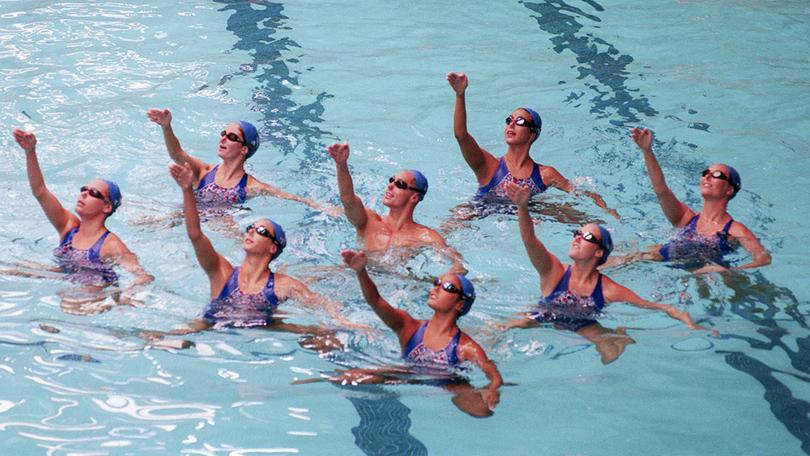
As you watch the US artistic swimming team practice for the Olympics — their bodies upside down, their legs scissoring in the air in perfect time, like frenzied offshore wind turbines — you will notice two things.
First, the sport is much harder, and possibly even more insane, than you thought. Second, in a discipline whose enthusiasm for homogeneity is reflected in its pre-2017 name, synchronised swimming, one of the athletes in the pool is very much not like the others.
His name is Bill May, and he is the only man on the team.
Sign up to The Nightly's newsletters.
Get the first look at the digital newspaper, curated daily stories and breaking headlines delivered to your inbox.
By continuing you agree to our Terms and Privacy Policy.A rule change in 2022 cleared the way for men to compete in the sport at this summer’s Paris Games. That means that this is May’s first and, realistically, last chance ever to fulfill his lifelong dream of competing in the Olympics. He is 45 years old.
There are 12 people on the team, but only eight, plus an alternate, will get to travel to Paris. On Saturday, the team will announce who made the final cut.
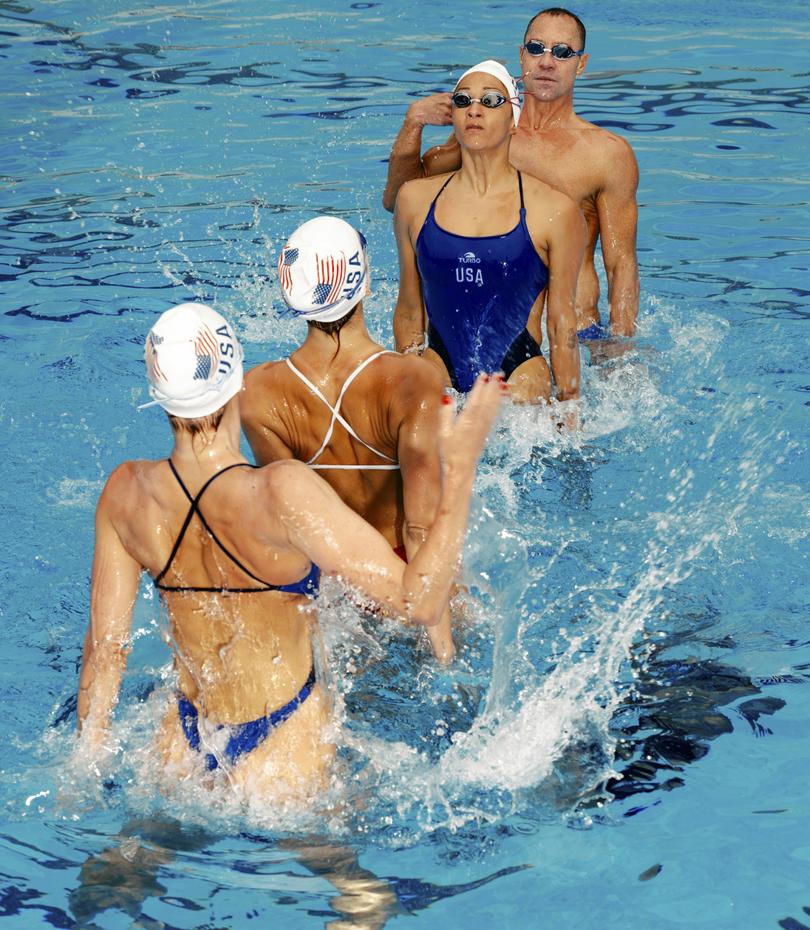
May is a breaker of barriers for more than three decades and a leader in the decades-long effort to open Olympic competition to men.
But his fate this summer will rest not on his individual achievements or stature as an advocate, but on his ability to perform as one-eighth of a team of women half his age.
The impending decision hangs heavy over the team. Andrea Fuentes, the head coach, said she was so anxious about it that she was having trouble sleeping.
“I grew up being Bill’s fan, and we all know him as a pioneer in the sport,” she said. “But you have to do what is best for the team.”
May is careful to maintain an air of appreciation and humility.
“I’m nervous for myself,” he said during a break in the eight-hour practice at Park Pool, on the campus of UCLA, the other day. “But I’ve been in the sport for 35 years, and I’m so proud and grateful for everything it’s given me.”
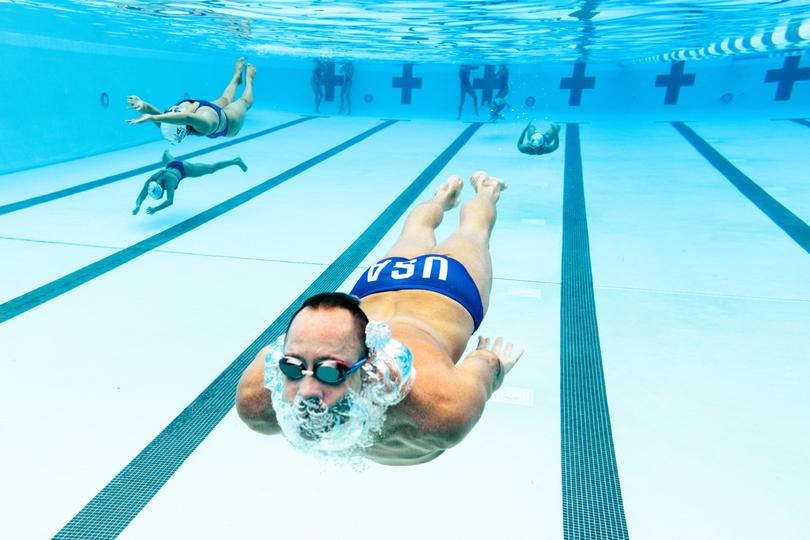
Artistic swimmers are superb athletes with the cardiovascular conditioning of sprinters and the flexibility of gymnasts.
They spend much of their time upside down, holding their breath and remaining afloat by rapidly sculling with their arms.
They’re not allowed to touch the bottom of the pool, their underwater vision is fuzzy (goggles are forbidden in competition), and their routines are so precise and their configurations so compact that the slightest misstep can result in unpleasant collisions and kicks in the head.
It’s not unusual for athletes to become concussed or to faint from the intensity.
The seriousness of the pursuit was on full display on a recent Monday.
Except for a 30-minute break in an improvised hot tub, the athletes would spend most of the next 7 1/2 hours in the pool.
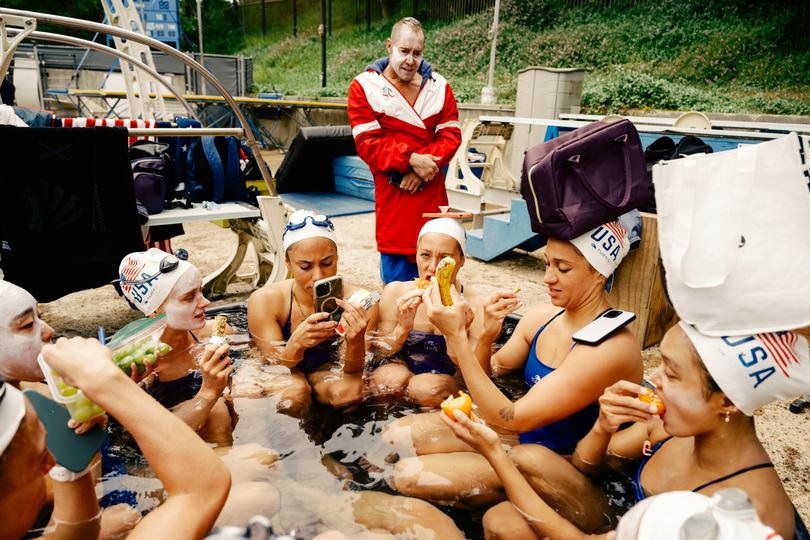
Fuentes cranked up the soundtrack to their routine and led them painstakingly through each element.
They would perform a move; she would record it on her iPad; and then, treading water using an “eggbeater” leg motion, the athletes would watch the replay, take instruction and do the whole thing again. It was rigorous and exhausting.
Except for a brief bathroom break, not once in the first five hours did May ever leave the water or take a rest by, say, hanging on to the side of the pool or standing on anything; he spent the downtime treading water and joking with his teammates.
May’s story is so singular that it’s hard to see him as anything other than an anomaly.
He grew up in Syracuse, New York, with a mother who was a teacher and a father who worked as a typesetter and security guard.
A gymnast and competitive swimmer as a boy, he fell in love with artistic swimming at age 10, when he tagged along to his younger sister’s class.
“People often ask, ‘Why did you choose artistic swimming?’” May said. “I didn’t choose it. It was waiting for me. It chose me.”
He swam with a few upstate teams, including the Syracuse Synchro Cats and the Oswego Lakettes, until the coaches told him they had nothing left to teach him.
At 16, May moved to California to train with the best coach in the country, Chris Carver of the Santa Clara Aquamaids.
Carver was impressed by how hard he pushed himself and how he remained enthusiastic no matter what.
“I thought he was going to be wonderful,” she said.
May competed nationally as his reputation grew, but top international events remained closed to men.
After training with the US Olympic team in 2004 but cheering from the sidelines during the competition, May retired from the sport at 25 and moved to Las Vegas.
For the next 17 years, he performed in Cirque du Soleil’s aquatic spectacle, O, but remained an advocate for men and an ambassador for artistic swimming.
Then, in 2014, came the news that men would be able to compete in the world championships the following year in mixed duets, pairs of one man and one woman, as in figure skating.
May came out of retirement to compete and won two medals in two different routines with two different partners. More medals followed in more worlds.
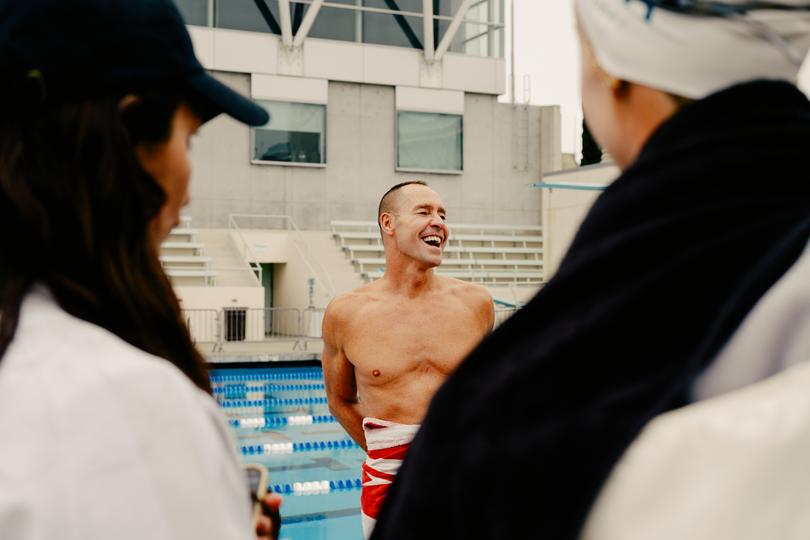
A few years ago, May left Cirque du Soleil and became the head coach of the Aquamaids, now called Santa Clara Artistic Swimming. But the Olympics remained elusive.
The 2016 and 2020 games came and went; men were still ineligible to compete. That they are able to in 2024 is due in large part to May’s long, passionate campaign.
Although May has competed in (and won) many non-Olympic international championships in male-female duets, it has been 20 years since he competed on a larger team. The sport is more technically difficult and the judging more rigorous now.
He is 28 years older than the youngest person on the team, 17-year-old Audrey Kwon. The assistant coach, Megan Abarca, has known him for 20 years — since she was 10, and May was her coach.
May made the US team a year ago, as soon as it opened to men.
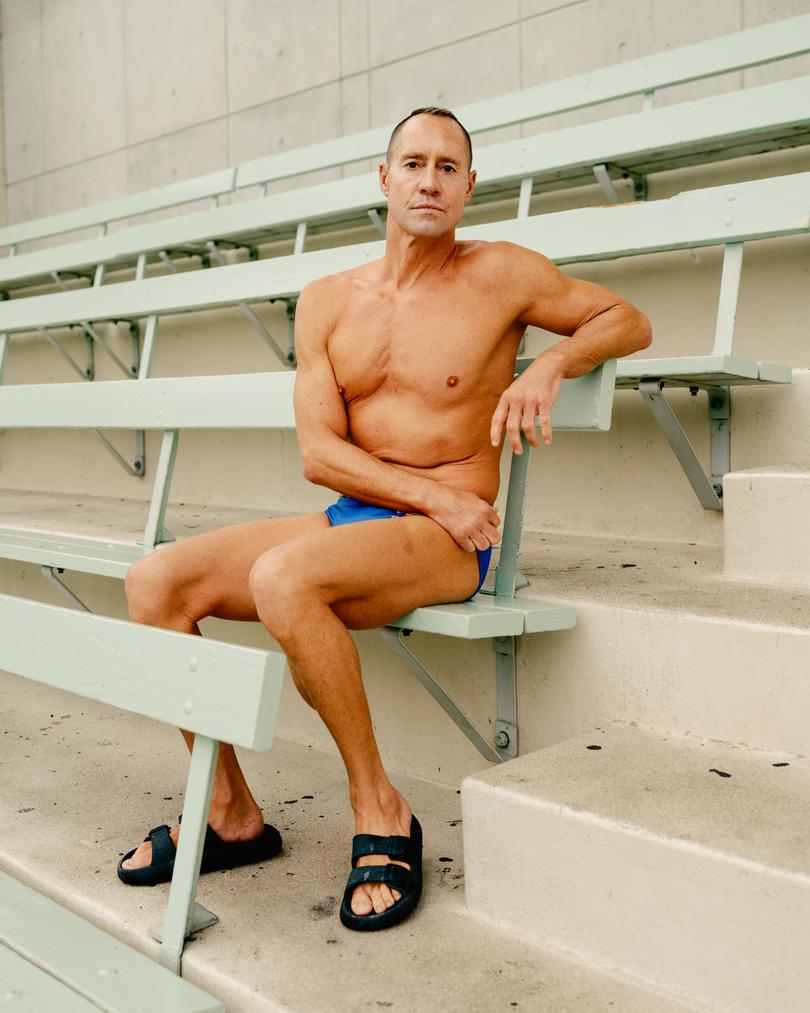
Being a man doesn’t necessarily provide an advantage in artistic swimming, which requires flexibility as well as endurance.
But men have helped move the sport in exciting directions with complementary skills that help enhance its athleticism and power, said Lisa Schott, the technical and artistic swimming chair at World Aquatics, the sport’s governing body.
May appears to be the only male artistic swimmer left standing (or swimming, as the case may be) from any Olympics-bound team. Most countries have no men currently swimming at anything near his level in team competitions.
“It would be devastating not to make the Olympic team — that maybe I could have done something different or worked harder,” May said.
“But even beyond that, my biggest fear is not to see a male presence at the Olympics,” he added.
“To finally have the opportunity to introduce men into the Olympic Games, to know that the sport is finally inclusive but not to see that representation — it’s almost like a slap in the face.”
This article originally appeared in The New York Times.
© 2024 The New York Times Company
Originally published on The New York Times
